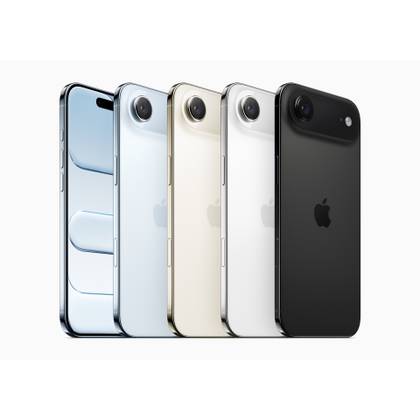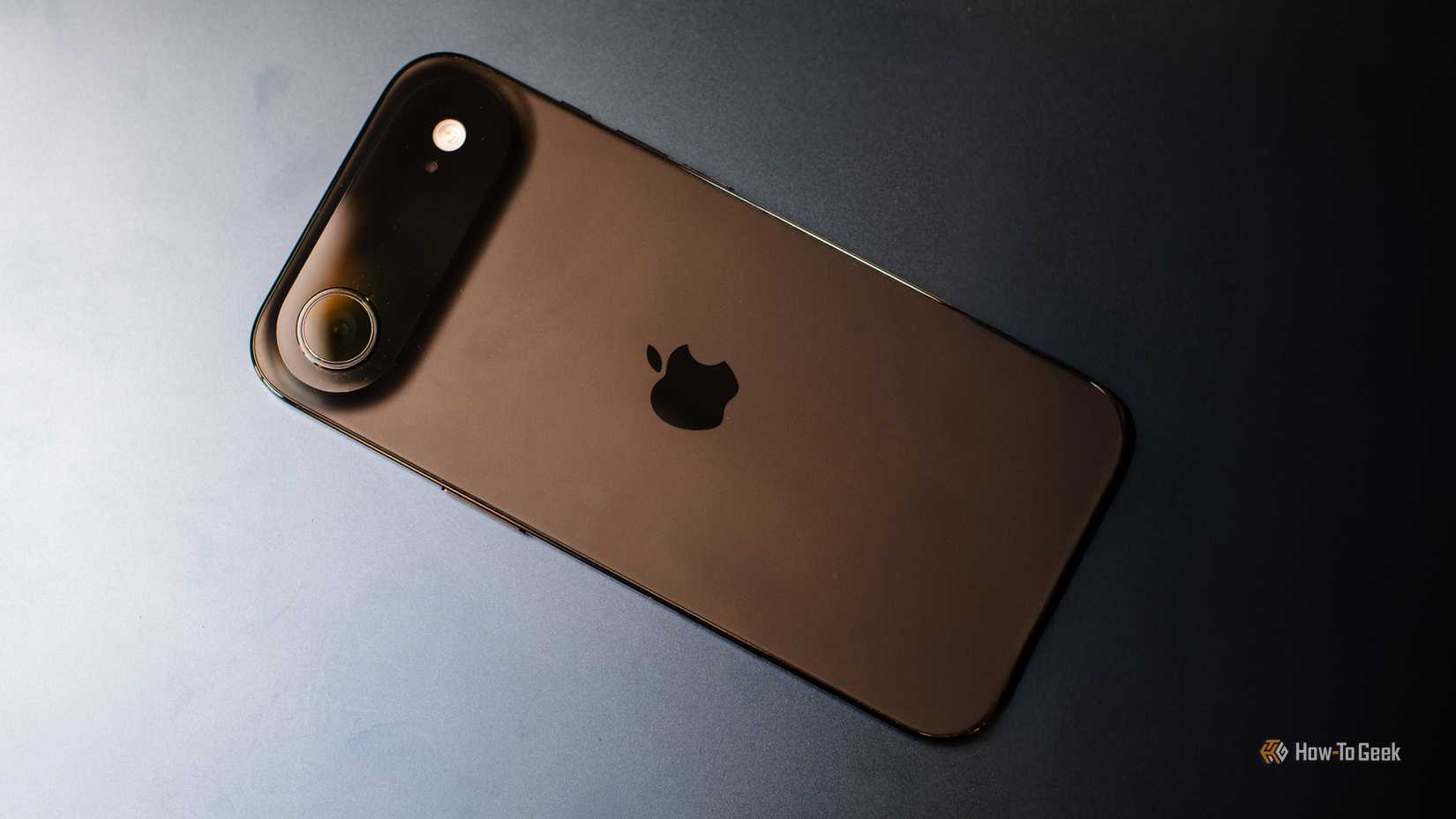It’s 10:30am and I’m at 77%. It’s been a busy morning—kids up early, streaming the new Tame Impala album to my Sonos speakers, watching a few of my friend Stephen’s terrible Sora videos—but nothing out of the ordinary. Still, my iPhone 17 Pro wouldn’t be this low this early. Am I worried? Yes and no. It’s a solvable problem, but it’s still a problem.
And that’s basically the throughline of the iPhone Air, which, after a month in my pocket, I heartily and unreservedly recommend to anyone, not just early adopters or tight-pocketers. As a thin-phone skeptic of the highest order, I was expecting to dismiss the iPhone Air as a gimmick, a throwback, but it is anything but. This is a remarkable product that speaks to Apple’s unique capacity for shipping more than just an idea. It’s not a perfect thing, but it’s certainly more complete than the mere “V1” moniker it’s inherited.

- SoC
-
A19 Pro chip
- Display
-
6.5-inches
- Storage
-
256GB, 512GB, or 1TB
- Ports
-
USB-C
The iPhone Air is a surprisingly capable phone in a slim-and-light form factor that compromises in the exact right areas.
- Lightweight, thin, and somehow still durable
- Single rear camera is excellent and capable
- Battery life is sufficient for light all-day use
- Consistently good performance
- Single speaker is a bummer, but not a dealbreaker
- Heavy users will want to go Pro
- Lack of ultrawide and telephoto camera options limit photo and video options
Price and availability
The iPhone Air starts at $999, a $100 jump from the equivalent iPhone Plus that it replaces in the lineup. It’s available in either black or white SKUs since it’s made with a titanium frame that doesn’t take to colorful annodization that Apple brought back to the Pro lineup this year.
- SoC
-
A19 Pro chip
- Display
-
6.5-inches
- Storage
-
256GB, 512GB, or 1TB
- Ports
-
USB-C
- Operating System
-
iOS
- Colors
-
Sky Blue, Light Gold, Cloud White, Space Black
- Display type
-
Super Retina XDR display
- Material
-
Titanium
When Limitations Are a Virtue
The primary consideration when buying a phone is usually what it can do for you: Is the display expansive enough?; Is the battery large enough for all-day use?; Do the cameras provide the flexibility for most scenarios? But the iPhone Air flips the script a bit; The 6.5-inch display is certainly big enough for almost everything you’re going to want to do on a phone, but the fact that it’s glued to a chassis just 5.6mm thick is remarkable.
On paper, the difference between the 5.6 millimeters of the iPhone Air and, say, the 8.75mm of the iPhone 17 Pro seem relatively minor. In person, across days and weeks and months (and likely years), the contrast is enormous.
More so the weight: The iPhone Air is just 165 grams, some 41 grams less than the iPhone 17 Pro and 68 grams lighter than the 17 Pro Max. It’s a big deal. I’d have to go back at least half a decade or more to recall a phone that weighed this little, and it was almost certainly half the size of this one.
I cannot be more effusive about how the iPhone Air’s pancake-like size and weight distribution impact its usability in a positive way. In fact, they’re the reason to buy this phone. If, aside from the advantage of having such a visually arresting phone, you see little upside to owning a phone like this, it’s probably not for you.
But for me, these physical realities are significant. They’re, conversely, worth the trade-offs you need to make when considering the iPhone Air.
The iPhone Air’s pancake-like size and weight distribution impact its usability in huge ways. In fact, they’re the reason to buy this phone.
The Camera You Have in Your Pocket
The iPhone Air’s camera is a challenge I’m willing to accept. It’s the reintroduction of the fixed-length rangefinder I carried around with me in university, forcing me to physically move to frame the shot I want or, in lieu of getting it, settling for something more creative and unorthodox.
I certainly miss the ultrawide and telephoto lenses I so often used in my brief time with the iPhone 17 Pro, but what surprised me was how quickly I moved past that longing for an easy zoom or a moody landscape. Instead, I found myself thinking more deliberately about what photo I was trying to take, and being more pleased with the results.
Of course, the other camera is on the front, and it’s the same one festooned on every other iPhone 17 model, square sensor and eminently capable. Does it completely change the game? No, it lets me better frame myself when my kids are trying to run away from my frequent selfie requests.
The Battery Isn’t Actually a Problem
As a heavy user, the iPhone Air has never lasted me a full day. I’ll just get that out of the way, because if you’re the kind of person allergic to midday charging, this is not the phone for you.
But in general, with a single 30 to 60-minute charge somewhere in the realm of your afternoon coffee break, you’ll be fine ’til bedtime. I’ve started making auspicious use of my UAG 5K MagSafe charger that, when applied, makes the phone only barely thicker than a regular one, but it’s a consideration you’ll need to make when deciding to buy the iPhone Air. It’s a trade-off I’ve grown used to, and actually feel is acceptable, but I’m also near a charger most weekdays, so your mileage may vary. On longer trips, I’ve found my trusty Anker 100 Wh brick charger to top up the Air fast enough to avoid any real anxiety.
On most days, however, I barely think about the iPhone Air’s battery. Its maintenance is neither an active chore nor a passive nuisance; the pervasiveness of wireless chargers throughout my house, and magnetic ones in my pocket or bag, make topping up the phone a non-issue. This isn’t me being a battery apologist; on the contrary, this is me actively praising Apple for making the battery in this lithe device so good that it barely needs babysitting, and I don’t know many people who, on launch day, predicted that outcome.
The Speaker Is a Red Herring
“Just don’t watch movies on your phone,” I say out loud to the YouTuber complaining about how the iPhone Air’s single speaker makes for a compromised movie-watching experience. Yes, the earpiece speaker is tinny and nowhere near as capable as the bassier stereo setup on most modern phones, but in my experience it not only goes loud enough but it does exactly what it needs to do: convey the occasional podcast or audiobook when my AirPods aren’t nearby.
Should You Buy the Apple iPhone Air?
An iPhone Air Apologist
At this point, the rest of the story should be fairly straightforward because the iPhone Air is essentially a mix of the iPhone 15 Pro and 16 Pro (titanium frame) and the iPhone 17 Pro (A19 Pro SoC and Ceramic Shield 2). The display is superb—a bright and accurate OLED—and performance is sublime, even with one fewer GPU cores than the Pro. Call quality and 5G performance is excellent, courtesy of the C1X modem, a testament to how far Apple’s baseband team has come since the early days of its beleaguered Intel acquisition.
So do I have any critiques of this device? Honestly, not many. It does occasionally get toasty when under heavy load, a consequence of the A19 Pro being crammed into a small area at the top of the phone, which Apple desperately wants us to call the “plateau.”
Yes, it’s too expensive, too limited, and maybe too big for some people. But this is a phone made with a certain buyer in mind, and based on early indications, there are fewer of them than Apple perhaps anticipated. Is that because the fundamental idea of an ultra-thin iPhone is flawed, or that the Air, despite itself, sits uncomfortably in the middle of Apple’s best-ever iPhone lineup, buttressed by a $799 iPhone 17 that received practically every upgrade we wanted and an iPhone 17 Pro lineup that markedly improves sustained performance, battery life, and camera quality.
Still, given all the options this year, I’d still choose the $999 iPhone Air over any of the others, both for what it can and can’t do. That may be a me thing, but it’s also probably an indication that there is a growing demand for smart devices, particularly phones, that encourage constraint and thoughtfulness. The iPhone Air, with its lithe frame and inherent limitations, is a step in the right direction.

- SoC
-
A19 Pro chip
- Display
-
6.5-inches
- Storage
-
256GB, 512GB, or 1TB
- Ports
-
USB-C
The iPhone Air is the newest model to join the iPhone flagship line, and its design is lighter and thinner than ever.



